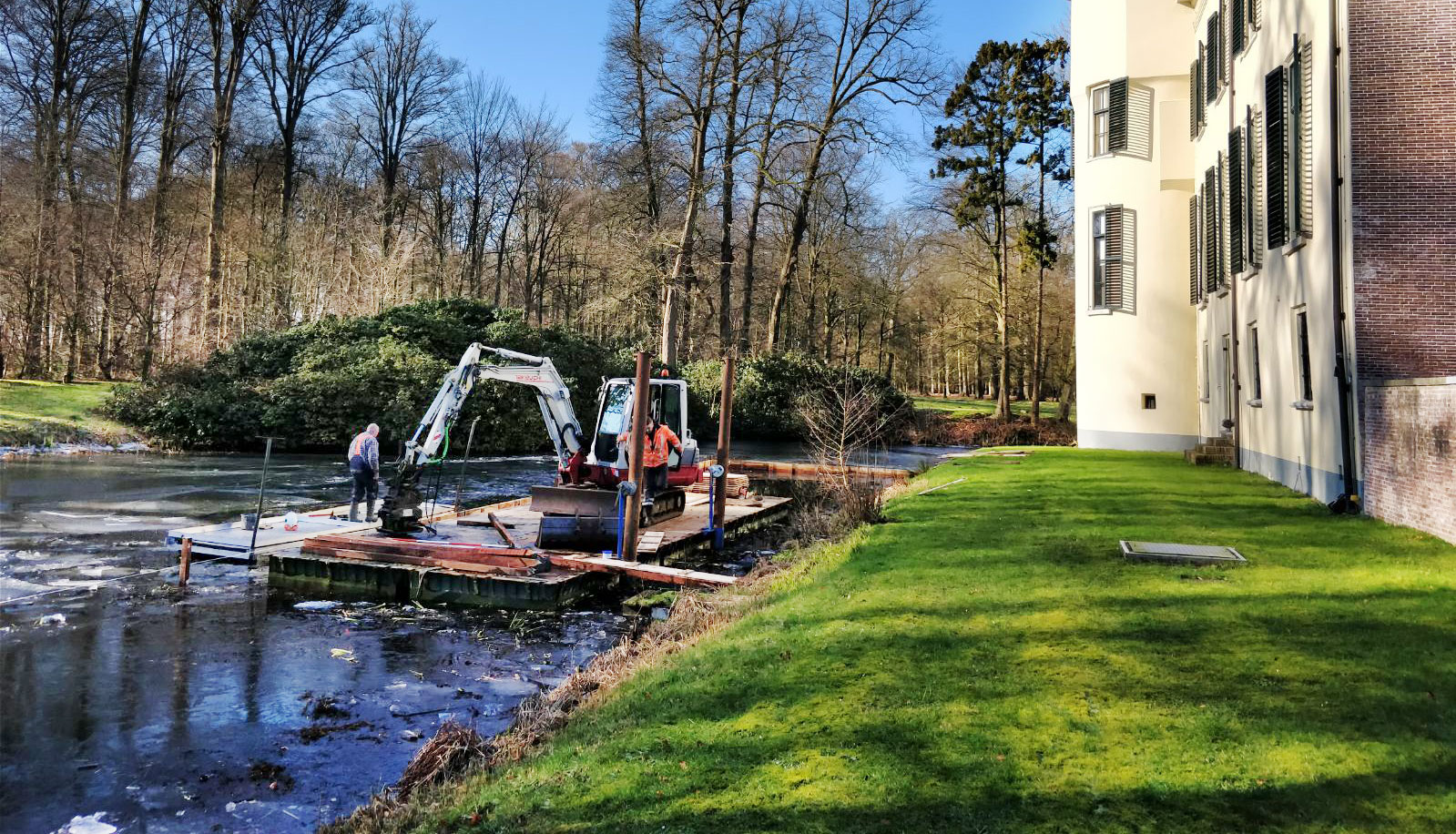Challenge
In many soil remediation projects, the installations have to be deployed for a long time in order to purify the pumped-up groundwater. This can lead to considerable costs. As a result, it is often decided to simply monitor the contamination in the groundwater. This approach does not resolve the actual problem, and can lead to unexpected risks. Through the development and use of constructed wetlands, a step has been taken towards a fully biological method for groundwater purification, which is coupled with very low costs.
Solution
A constructed wetland is an approach that is derived from processes that can be seen in nature in low-lying coastal and marsh areas. These areas are typified by highly variable conditions in the soil complex at short distances from one another. As a result, there is a considerable variation in conversion processes. This principle is used for a constructed wetland. In a constructed wetland, a contaminated water flow is exposed to different biological processes that help to break down the contaminants. When designing a constructed wetland, it is crucial to have information on the type of contamination and the flow rate. This information determines the necessary compartments for the breakdown and the extent of the constructed wetland.

A constructed wetland was designed and implemented for a location in Amersfoort in order to treat a water flow contaminated with tetrachloroethene. In the wetland the water flow is alternately exposed to anaerobic and aerobic conditions. The vegetation in the wetland ensures for a permanent release of DOC into the water. The influent level amounts to around 2,000 µg/l. The effluent from the constructed wetland is below the discharge standards of 30 µg/l. The energy for pumping up the groundwater is supplied by a small windmill at the location. In Doorn, a constructed wetland has been set up in the moat surrounding Huis Doorn castle. The constructed wetland consists of two parts: an anaerobic filter that converts the tetrachloroethene in the groundwater into vinyl chloride. The water is then guided into the moat to where aerobic conditions ensure the conversion of the vinyl chloride.

Results
The application of a constructed wetland in Amersfoort realises sufficient purification of the groundwater. There are seasonal effects on the wetland, but they have not had any influence on achieving the discharge standards or the flow rates. Any evaporation above the wetland cannot be measured. The maintenance costs for the wetland are very low. At the location in Doorn it was possible to realise a constructed wetland in a highly sensitive parkland. The application of constructed wetlands at the locations in Amersfoort and Doorn has led to a great deal of experience as well as ideas regarding further possibilities. It is for example possible at almost every location to make the constructed wetland energy neutral using solar or wind energy. What’s more, the water from the wetland, which is rich in chlorinated bacteria, can be led back into the soil. This will help to stimulate the biological breakdown in the soil.

